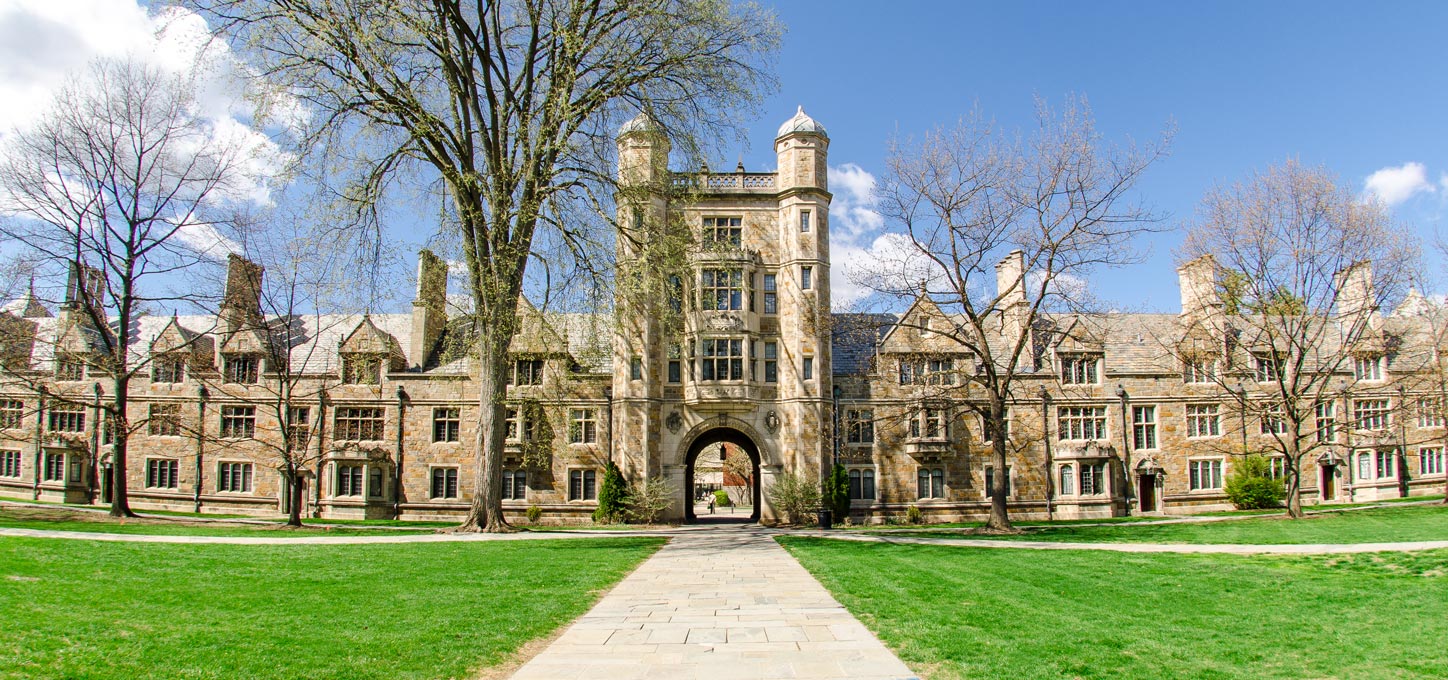College is expensive, no question.
That high cost is a barrier for many students, preventing them from obtaining the higher education they need to be successful. Those who do strive for a college education often graduate burdened by so much debt that it takes them decades to pay it off. Some are never able to pay the bill.
National student debt, in fact, is expected to soar to $1.71 trillion in 2021, according to the Federal Reserve Board’s G.19 report. In addition to the cost of high tuition, Matt Newlin, Ed.D, an education consultant and public speaker with over 15 years of experience in the financial aid industry, says hidden costs are also contributing to this debt explosion.
Regardless of the how and why behind growing student debt, such high levels of debt carried by the general population create a drag on the overall economy. Moreover, it’s simply an unmanageable burden for many individuals. In response to this debt crisis, there is increasing political and popular pressure to make college tuition-free, most notably from Vermont Independent Senator Bernie Sanders in his 2016 presidential campaign. Since then, many politicians have adopted the rallying cry.
It’s important to note that affordable college proposals don’t account for incidental fees and other expenses, so even without tuition, a level of financial planning and support would be required for those enrolled at a college or university. Furthermore, “free college” wouldn’t actually be free, but rather college tuition would instead be covered by taxpayers, under plans proposed by politicians like Sanders.
So exactly much would free college cost taxpayers? Like anything related to public policy and education, that’s a complicated question. In this article, we hope to come close to answering it.
How Would Funding for Tuition-Free College be Structured?

Tuition-free programs that have been tried so far have mostly been structured through the “last dollar” approach, while most federal proposals for tuition-free college employ a “first dollar” strategy. While research is ongoing, there are pros and cons to each style of funding, and both could be used to structure a federal program, with similar results.
Here’s the difference, and how each program might work to fund tuition-free college on the federal level.
First Dollar Funding
A first dollar funding structure for tuition-free college means the state covers tuition costs before other grants and scholarships are applied to the overall cost of a college education.
Tuition-free proposals from Senator Elizabeth Warren and Senator Bernie Sanders are both structured this way, among many others.
First dollar funding does free up additional gift aid provided to students from private scholarships, grants, and employment to cover textbooks, living costs, fees, and other expenses incurred by students. It does, however, make the total price tag for tuition-free college pretty hefty. That’s because the government is on the line for the total tuition bill, as opposed to what’s left after other grants and scholarships are applied, as is the case in the “last dollar” funding approach. (We’ll explain more about last dollar funding a bit later).
In other words, if student tuition is $5,000 and the student already has $2,000 in scholarships or grants, such as the Pell Grant, the entirety of the $5,000 tuition bill is picked up by the state, leaving the remaining $2,000 for the students to pay incidental costs, fees, books, and course materials, which would further mitigate student debt.
Pros:
- Tuition completely covered by the government
- Additional gift aid, scholarships, and grants could be used for other purposes
- Reduces the likelihood of students going into considerable debt while in college
Cons:
- Nearly triples the cost of tuition-free college to the federal government
Last Dollar Funding
As opposed to first dollar funding, last dollar funding means the government covers the remaining cost of tuition only after all other aid, like grants and scholarships, have been applied to the overall tuition bill.

This reduces the overall cost of tuition-free college to the government, but it might lead certain students to take out loans to cover the remaining costs of college beyond that of just tuition.
Tennessee’s Promise Scholarship is funded this way. The Promise program eliminates tuition and mandatory fees for high school graduates at community colleges all across the state. Similar programs in some states are merit or academically-based, creating further disadvantages for underrepresented populations when seeking access to higher ed.
In Missouri, for example, education consultant Matt Newlin says students have to qualify for the A+ Program grant with a certain GPA, community service hours, and a Free Application for Federal Student Aid (FAFSA) on file.
“For many students, those barriers make them ineligible for the grant, which covers nearly all costs at state community colleges,” he says.
As a result, higher-income students are more likely to benefit from this program, while lower-income students still might not be able to foot the bill.
Furthermore, it’s unclear whether or not programs such as these actually reduce overall student debt. Student loan applications did decline in the state of Tennessee by 17% after the program was adopted in 2015, but the number of students filing a FAFSA increased by 40%.
Nevertheless, studies do show that as of 2020, college enrollment in Tennessee is up 2% for both undergraduate and graduate students alike, according to the National Student Clearinghouse Research Center. This is at odds with a roughly 2% decline in enrollment across all students nationwide.
Pros:
- It may help prevent some students from going into debt
- Pays remaining tuition expense after grants and scholarships, while possibly boosting enrollment
- Less expensive for the government
Cons:
- Less effective for helping students cover all college expenses
- Under either funding approach, estimates vary as to exactly how much taxpayer-funded college would cost the average taxpayer
One example, the College for All Act of 2017, introduced by Senator Sanders and Congresswoman Pramila Jayapal of Washington State, has an estimated cost to taxpayers of $470 billion over ten years, pushing the education budget under the current Biden administration to $1.22 trillion. No small number, to be sure, but paltry in the context of the federal budget. However, some estimate the real cost of the Sanders’ plan at something more like $2.9 trillion.
Other Funding Programs

Where exactly would all that money come from for taxpayer-funded college? Well, the simple answer is taxes. What kind of taxes, and for whom and on what goods and services, varies between states and between legislators at the federal level. And whenever legislatures discuss increasing taxes, controversy and lengthy debate are sure to follow.
Regardless of the funding strategy, many states already offer programs to make community colleges universities free or practically free.
The list of states offering free or nearly cost-free higher education either at community colleges or four-year colleges and universities include the following: Oregon, Nevada, Arkansas, New Jersey, Maryland, Tennessee, New York, Rhode Island, Delaware, Kentucky, and Indiana.
In addition to the states already mentioned, there are many similar programs in development in state legislatures all across the country.
One of the most notable programs already up and running is New York’s Excelsior Scholarship, applicable to all schools in the City University of New York (CUNY) and State University of New York (SUNY) systems. It’s estimated that nearly a million middle-class families and individuals earning up to $125,000 are eligible for the program.
In addition to scholarships like Excelsior, there is already a large chunk of money spent on financial aid programs, such as the Pell Grant, among others offered at the state level. Pell Grants and the like don’t contribute much to overall student debt — so why not simply expand those opportunities?
Supporters of tuition-free public education say one desirable outcome of eliminating tuition is increased enrollment, and in turn, a population better prepared for the jobs of the future, for which college degrees are increasingly required. Although studies show that programs like the Pell Grant certainly encourage low-income students to enroll in college—which is a good thing—they don’t boost overall college enrollment.
To this end, experiments in tuition-free higher education go a long way toward accomplishing this goal, as well as the following objectives:
- Mitigating current inequalities through increased enrollment
- Lowering student debt
- Improving completion rates, especially among low-income students, students of color, and students who are the first in their family to attend college.
On the topic of underrepresented populations at colleges and universities, education consultant Matt Newlin says that despite federal financial aid options and private scholarships, many low-income and first-generation students are still reluctant to consider postsecondary options, assuming the cost will be too great.
Free tuition programs might help institutional equity, Newell says, “by providing pathways for students who have been historically left out of higher education.”
Not all programs are funded through taxes, however. The Tennessee Promise scholarship, for example, is funded through existing resources, primarily the interest from the newly established Tennessee Promise endowment, among others.
To fully understand the push for free college, it’s important to understand the average cost of college as it stands today. We’ll examine that next.
What Is the Average Cost of College for Four Years?
According to current data provided by author and nationally-recognized expert on student financial aid, scholarships, and student loans, Mark Kantrowitz, the cost of higher education is up across the board for both in-state and out-of-state students and at both two- and four-year colleges. That number has increased annually by roughly 15% since 2010, and the average cost of a two-year program has gone up by a rate of 16% in that same time period, according to data from CollegeBoard.org. The vast majority of students attend public institutions, and that cost is too much for them to carry on their own without the help of grants and scholarships. And more often than not, student loans.

The reasons why so many people are willing to take on so much financial burden to obtain a college degree are clear: According to recent research from Georgetown University’s Center for Education and the Workforce, 35% of all job openings require a Bachelor’s degree, and 30% require some college or an associate degree.
These numbers present high school graduates with a dilemma: to find good-paying work, it takes some education beyond high school, but that education has become so expensive, many people wonder if a college degree is really worth it.
Despite the cost, it turns out the earning potential for those with a bachelor’s degree does make the expense of a higher education worthwhile. According to data from Northeastern University, those with a four-year degree make up to $750,000 more in income over a 40-year career than those without a college degree. With the average student carrying about $30,000 in debt by the time they graduate, a college degree is clearly still worth it.
But how much better would the overall economy be, and how many more people could take advantage of college education, if higher-education was tuition-free — defined as free tuition but still possibly including fees and other living expenses? According to some, the expense to the taxpayer would be astronomical, putting the objective out of reach.
But the fact of the matter is that the federal government already spends a lot of money on higher education. We’ll examine those numbers, next.
How Much Does the Federal Government Spend on Education?
Taxpayer-funded higher education would cost a lot. In 2020, the federal government spent $115 billion in federal grants, loans, and work-study funds, helping nearly 11 million students. In addition, tuition and fees have increased by up to 35% over the past decade. Overall, public colleges and institutions received about one-third of their budget from the federal government, and that number is falling according to education consultant Matt Newlin. In many states, he says, funding levels haven’t recovered from the 2008 financial cash.
Quite clearly, taxpayers already foot the bill for higher education to a large degree. Would taxpayer-funded college tuition amount to an increase or decrease in federal spending, or instead, would it simply be a matter of reallocating money that is already being spent? And how does society truly set a price limit on a well-educated and financially stable population?
These questions and more are currently under debate, and given the Biden administration’s commitment to reducing student debt and restructuring the cost of college education, definitive action seems likely.
Conclusion
College costs a lot these days, and that’s left many wondering if a college education is still worth it. Studies show that those with post-secondary degrees earn significantly more over the course of their career. For this reason, a college education is still worthwhile for many, even though most students graduate with significant debt burdens. The high cost, however, is a barrier for many, preventing them from ever obtaining a college degree and enjoying the increased income potential, job opportunities, and upward mobility made possible by a degree.
There’s a lot of disagreement about how tuition-free college might be funded. But most proposals fall under one of two strategies:
First dollar funding means the government covers the cost of tuition before any other grant, loans, and scholarships are applied to the total overall cost. This means any additional funding a student may receive while completing their degree can be used for other college costs, cutting down the potential for additional debt. Most federal proposals for tuition-free college are structured this way. First-dollar funding of tuition-free college, however, is much more expensive than other funding methods.
Last dollar funding is much more affordable than first dollar funding, and many states, in fact, already fund variations on tuition-free college scholarship programs using this method. Last dollar funding covers the remaining costs of tuition after all other funding options have been exhausted by the student. Research shows that scholarships of this sort do boost enrollment in higher education across underrepresented populations, but whether or not last-dollar funding cuts down on student debt remains in question. Last dollar funding is, however, much less expensive for the government.
Either way, taxpayer-funded higher ed will be expensive, but the investment could be worth it. Especially when it’s taken into account how much the federal government already spends on higher ed, with mixed results.





